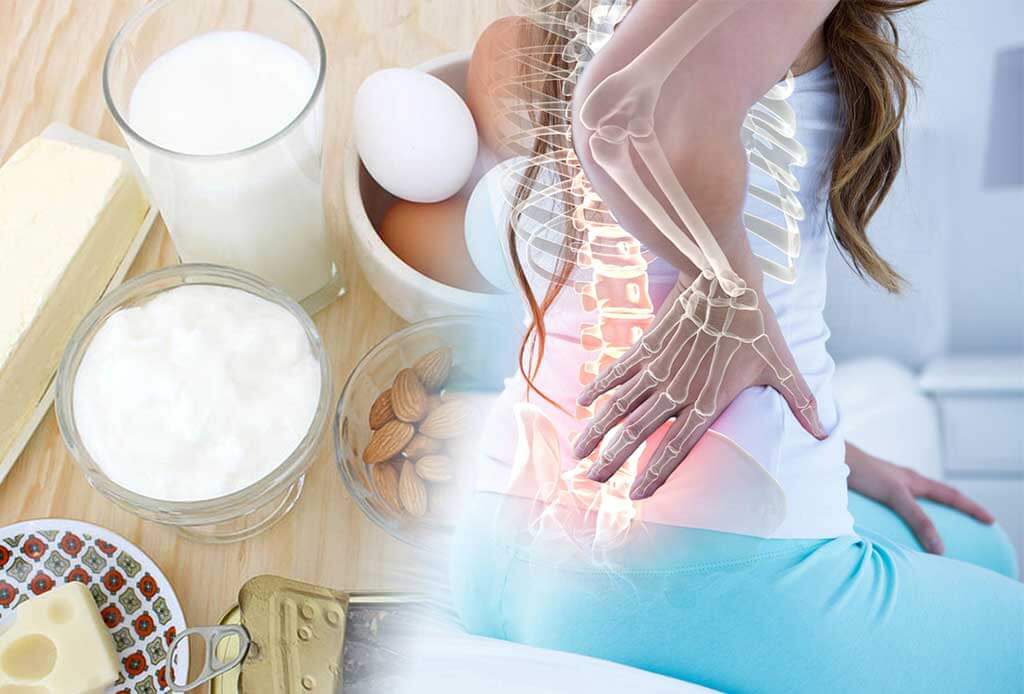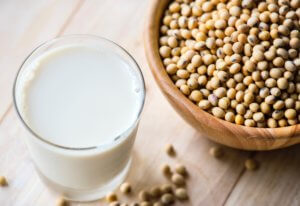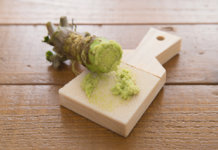While we frequently talk about heart disease, brain health, and weight loss, we often forget how essential healthy bone mass is to maintaining a high quality of life as we age.With May being National Osteoporosis Awareness month, it’s a good time to check-in on our diets to make sure we are including key nutrients needed for optimal bone density.
Before we get to the foods, let’s first define what osteoporosis is and why it’s worth being concerned over.
What is Osteoporosis?
Osteoporosis, which literally translates to “porous bone,” is a bone thinning disease than can lead to fractures. And while it doesn’t get the same attention as many other diseases, osteoporosis affects approximately 10 million Americans, with an additional 44 million at risk for the disease due to low bone density.
While our peak bone mass is generally reached by age 25-30, that doesn’t mean that our lifestyle decisions throughout the rest of our adult years don’t matter.
Generally speaking, our 40’s and 50’s are when the body starts to break down bone faster than it can build new bone. As a result, our bone mass starts to decrease, placing us at increasing risk for fractures. However, there are ways through diet, exercise and other lifestyle factors that we can slow down this breakdown and support the growth of healthy new bone.
 Why is Osteoporosis so serious?
Why is Osteoporosis so serious?
As mentioned above, low bone density can lead to osteoporosis, which is the thinning and weakening of bone. As a result, even the slightest bump or fall can result in a fracture, with the most common breakpoints being the wrist, hip, and spine.
And unlike fractures that happen when we’re younger, these breaks are often harder to recover from and may result in costly hospital and/or rehab stays as well as permanent reductions in mobility and independence.
Most concerning, however, is that osteoporotic fractures can even be life threatening. The good news, though, is that there are ways you can adjust your lifestyle to keep your bones stronger and healthier for longer.
Lifestyle Factors for Bone Health
While there are many nutrients needed for bone health, the biggies include calcium, vitamin D, magnesium, vitamin K, potassium, and omega-3 fatty acids. Furthermore, engaging in weight bearing exercises (such as walking, hiking, or tennis) and strength-training (including weights and body weight exercise) are essential for supporting healthy bone turnover.
But just as important as diet and exercise are for supporting bone growth, lifestyle factors such as smoking, excessive alcohol intake, and rapid weight loss all can increase the breakdown of bone.
 8 Essential Foods for Bone Health
8 Essential Foods for Bone Health
As we just discussed above, diet plays a key role in keeping our bones healthy, Here are 8 foods that are rich in vitamins and minerals that positively affect bone health.
- Canned Salmon: while salmon in general is a good choice, canned salmon in particular is good for bone health as it contains soft and digestible bones that are rich in calcium.
A 3-ounce serving provides approximately 232 mg calcium, 1,000-1,500 mg Omega-3, 447 IU vitamin D, and 26 mg magnesium. - Fortified Whole Milk or Soy Milk: it should be no surprise that milk is on this list as it’s a staple when talking about healthy bones. However, if you don’t drink milk then soy milk is your next best options, just make sure to choose one that’s fortified with vitamin D.
1 cup of fortified whole milk provides approximately 310 mg calcium, 180 IU vitamin D, and 410 mg potassium.
1 cup of fortified soy milk provides approximately 450 mg calcium, 120 IU vitamin D, and 380 mg potassium. - Plain Yogurt: also part of the dairy family, yogurt is an excellent source of calcium and potassium. Just be sure to choose plain and add your own sweetener via berries or honey.
1 cup provides approximately 274 mg calcium and 379.75 mg potassium. - Seeds: while we often forget about them, seeds are nutrient powerhouses. When talking about key nutrients for bone health, it’s hard to beat chia and flax seeds, which are rich in essential omega-3 fatty acids.
Chia Seeds: 1 ounce provides 177 mg calcium, 5 g Omega-3, 95 mg magnesium, and 115 mg potassium.
Ground Flax Seeds: 1 tablespoon provides 30 mg calcium, 1,597 mg Omega-3, and 21 mg magnesium. - Almonds: all nuts are good sources of minerals, but almonds in particular are high in calcium. Go with unsalted roasted for the healthiest choice.
1 ounce serving provides 72 mg calcium and 80 mg magnesium. - Sweet Potato: more than just being a good source of fiber, sweet potatoes are rich in various vitamins and minerals, and are an especially excellent source of potassium.
1 medium provides 28.6 mg calcium, 31 mg magnesium, 542 mg potassium, and 29.51 mg vitamin C. - White Beans: one of the more surprising foods on this list, white beans are a great, non-dairy source of calcium in the diet. Just be sure to choose no-added salt and rinse well before using.
1 cup provides approximately 191 mg calcium and 60 mg magnesium. - Fresh Figs: while figs are a nutritious way to brighten up a bowl of oatmeal or a salad, you can make the ultimate bone-boosting snack by pairing 3 figs with an ounce of cheese.
3 medium figs provide approximately 52 mg calcium, 7 mg vitamin K, 348 mg potassium, and 25 mg magnesium.
As you can tell from this list, there are very few foods that naturally contain vitamin D. While the body can synthesize vitamin D from sunlight exposure, due to the negative effects of chronic sun exposure, the current recommendation is to wear sunscreen and take a vitamin D3 supplement instead. While it’s important to discuss with your doctor before taking any supplements, in general, most people benefit from a daily dose of 1000-4000 IU.
How are you keeping your bones strong with age? Share in the comments below.






